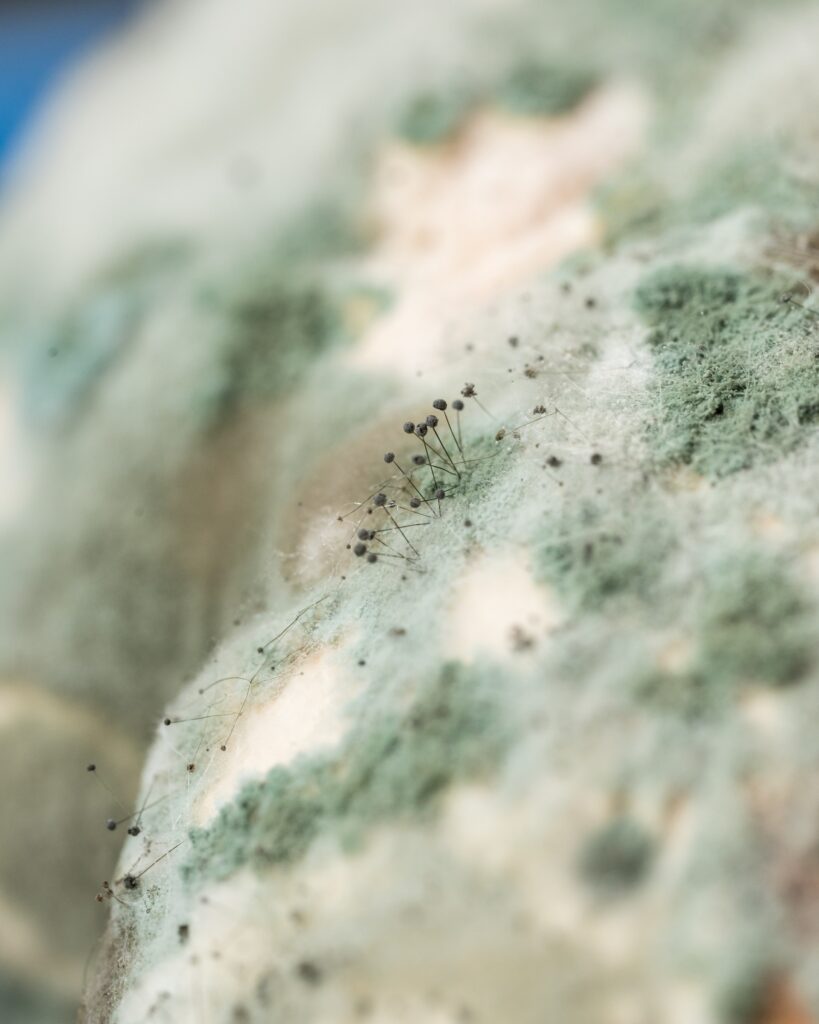Have you found something growing in your home and not sure what it is? Maybe you think it’s just a simple patch of mildew, but you’re not entirely sure if you have a full fledged case of mold on your hands? We get it. Today we’re going to go over the differences between mold and mildew, as well as the basic ways of remedying any unwanted growths within your household.
Being able to identify common mold types is essential to property ownership
As homeowners, you always want to keep your home safe and ensure that you have an understanding of what’s going on. Being educated will allow you to make the proper choices and provide a better understanding of how to remedy whatever growth may be taking up residence on your property.
Common types of mold and mildew that are commonly found in commercial and residential spaces
While there are many varieties of mold and mildew, there are only a small handful that impact the home, specifically. The most common include Stachybotrys (black mold), Mucormycetes (the white fuzzy mold you find around fruit and condensation points), Alternaria (found under skins and around showers), and Aureobasidium Pullulans mold (found in grout).
The most frequent cases of mildew include powdery mildew and downy mildew.
Where does mold normally grow?
Mold – like most fungi – generally need a damp surface to thrive. Dark and warm environments are also the most conducive for growth as UV rays kill mold spores and colder climates stunt growth. For these reasons, areas like your bathroom (or areas where water damage occurred) where it is both damp, warm, and has limited exposure to UV rays, is where most people will discover mold and mildew. Additionally, places that are out of sight (such as behind wall paper and under cabinets) are other locations in which mold can frequently be found.
What are the temperatures required for mold to grow?
As long as the temperatures are above freezing, mold can grow. The optimal temperature for mold on any given surface is around 60 to 80 degrees. This temperature range, as you may have noticed, encompasses the average household temperature year-round. In fact, mold only really begins to die when exposed to temperatures around 150 degrees fahrenheit.
The basics of mildew and mold remediation
Now that we’ve discussed where and how these fungi grow, let’s go over what types of threats they may play to your health and if there’s any real reason to worry.
How to identify mold vs mildew
Believe it or not, this is pretty simple! Yes, mold and mildew are both types of fungi, but each growth is inherently different and easy to visually identify. First and foremost, mold tends to grow in fuzzy circular patterns. Mildew on the other hand is flat and takes on the shape of a linear upward or sideways growth.
What are the dangers of not addressing mold issues in your space?
You’ve probably heard all the negative press surrounding “black mold”, but truthfully, you should be worried about all types of mold growth within the home as they each cause different types of health issues. The danger lies with how mold propagates – through spores. When these microscopic “seeds” are released into the air, breathing them in can cause a range of reactions from simple allergies to long standing health issues. Be diligent and try to remove any and all growths that you find promptly.
What are the negative side effects of mold and mildew?
For individuals that suffer regularly from allergies, mold can cause similar reactions. Watery eyes, coughing, irritated nose, and a sore throat. In fact, prolonged exposure can make you physically ill and potentially result in the need for medical assistance.
How to clean a mold and mildew infestation
Since we’ve emphasized the importance of removing mold and mildew immediately, we’ve included this section to help highlight how to best remedy an infestation. If not handled correctly and with the appropriate products, mold and mildew can consistently reoccur.
You can give it your best shot with your classic home cleaning supplies, but you’re going to need help!
Your average household cleaning supplies can do a world of good against your standard mildew problem, but mold may pose more of a task. For mildew, stick to branded cleaning products that are designed to tackle both mold and mildew to resolve the problem. For mold, a little more elbow grease will be needed. First it’s important to identify why the mold is present and if there’s an underlying issue that needs to be addressed. Then, there are a number of home-remedies that can be used, but the average cleaning product will not resolve the problem.
Hydrogen Peroxide, white vinegar, and baking soda can prove to be very helpful in smaller cases of growth.
Without a mold remediation specialist, you can’t be sure you’ve eradicated the mold infection
If the mold seems to repeatedly present itself in your home, there may be a long-standing underlying issue that needs to be addressed. Without a mold remediation specialist, there is no way to fully address the issue, risking not only your health, but the integrity of your home. In the world of mildew vs mold, there’s not a lot of room for error.
Let UES help you secure the future of your property
Don’t fall victim to a preventable issue, call UES to make sure that you and your property are taken care of for all mold removal needs. We remove and dispose of these harmful growths with care and efficiency to leave you feeling both happy and confident in a job well done. Call us today to discuss what we can do for you!


